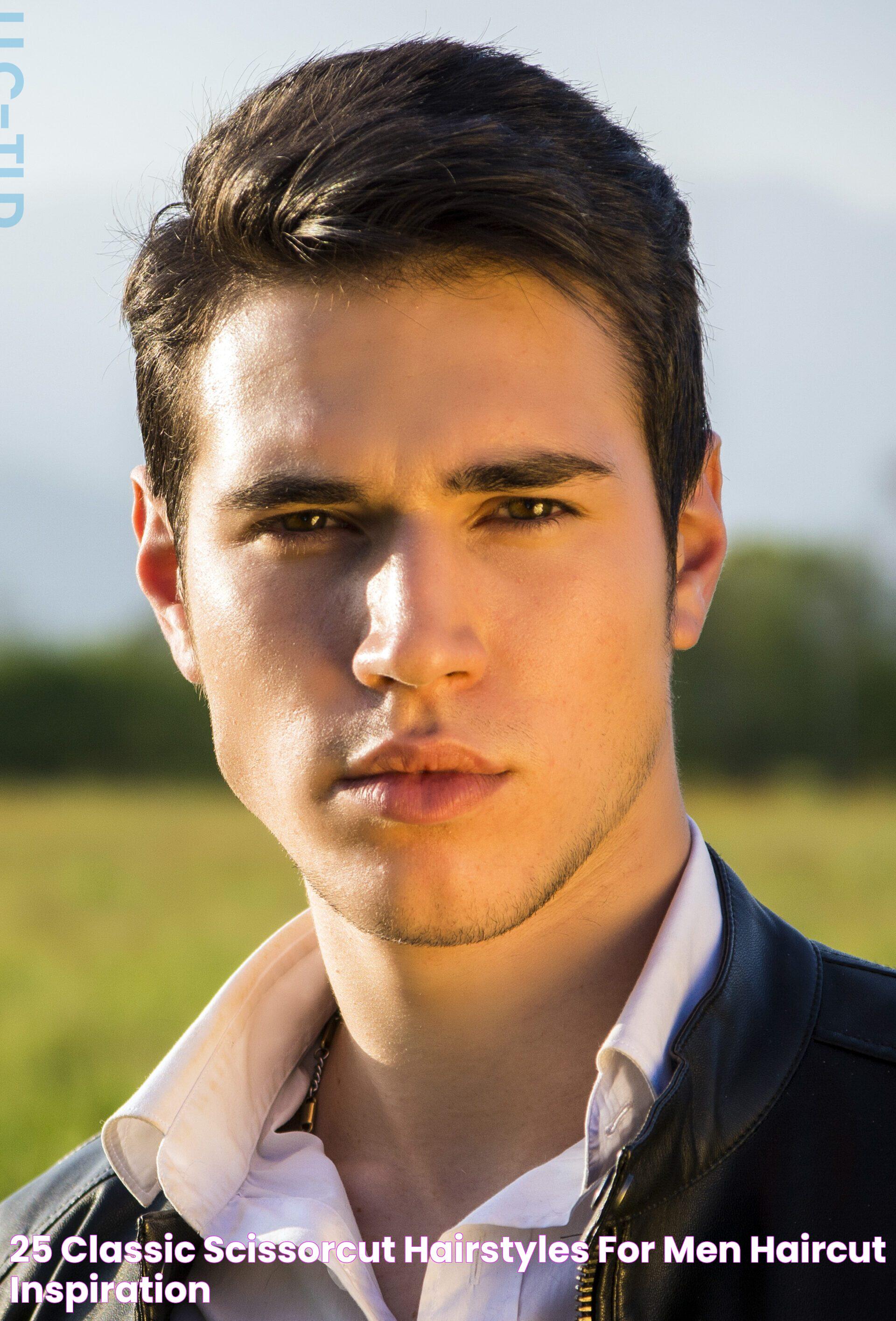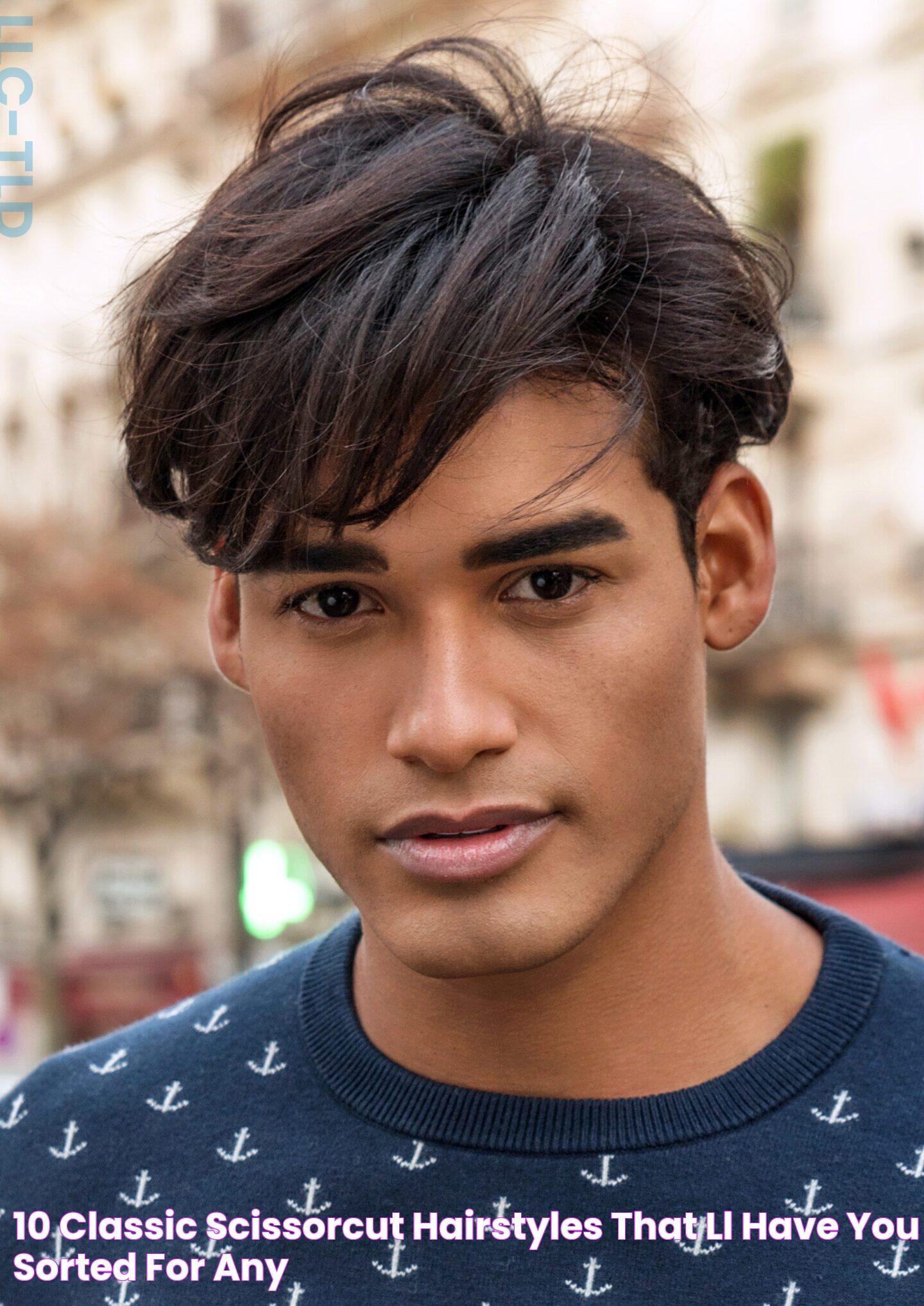The textured scissor cut is more than just a trend; it's a versatile haircut that suits various hair types and styles. Whether you have straight, wavy, or curly hair, this technique can enhance your natural texture and give you a chic, modern appearance. It's essential to understand the fundamentals of a textured scissor cut to ensure you're on the same page with your stylist and to guarantee that the end result aligns with your vision.
In this article, we'll explore the different aspects of requesting a textured scissor cut, including how to prepare for your appointment, what to ask your stylist, and tips for maintaining your new look. We'll also delve into the nuances of this haircut technique, providing you with the knowledge and confidence to articulate your preferences clearly. So, let's dive in and uncover the secrets to mastering the art of asking for a textured scissor cut!
Table of Contents
- Understanding the Textured Scissor Cut
- Preparing for Your Appointment
- How to Communicate with Your Stylist
- What to Expect During Your Haircut
- Maintaining Your Textured Scissor Cut
- Common Mistakes to Avoid
- Why Choose a Textured Scissor Cut?
- Frequently Asked Questions
- Conclusion
Understanding the Textured Scissor Cut
Before stepping into the salon, it's essential to grasp what a textured scissor cut entails. This technique involves using scissors to create layers and texture, adding movement and volume to your hair. Unlike other cutting methods, the textured scissor cut is highly customizable, allowing stylists to tailor the cut to suit your unique hair type and desired look.
Read also:Current Life And Achievements Of Pamela Anderson Now
The primary goal of a textured scissor cut is to remove bulk and create a more dynamic silhouette. By strategically cutting different sections of your hair, stylists can enhance natural waves, curls, or even add volume to straight hair. This technique is renowned for its versatility and ability to breathe new life into otherwise flat or lifeless hair.
Understanding the nuances of a textured scissor cut can help you articulate your vision more effectively to your stylist. Consider bringing reference images to your appointment to provide a visual representation of your desired outcome. This way, your stylist can better understand your preferences and tailor the cut to suit your individual needs.
Preparing for Your Appointment
Preparation is key when it comes to achieving the perfect textured scissor cut. Here are a few steps to ensure you're ready for your salon visit:
- Research Hairstyles: Browse through magazines, social media, or hairstyle websites to find inspiration for your textured scissor cut. Collect images that showcase the style you want to achieve, and bring them to your appointment.
- Assess Your Hair Type: Understanding your hair's natural texture is crucial in choosing the right style. Consider factors like thickness, wave pattern, and length when selecting your desired look.
- Clarify Your Goals: Think about what you hope to achieve with your textured scissor cut. Are you looking for more volume, movement, or a specific style? Having clear goals will help guide your conversation with your stylist.
How to Communicate with Your Stylist
Effective communication is the cornerstone of achieving the perfect textured scissor cut. Here are some tips on how to have a productive conversation with your stylist:
What Should You Tell Your Stylist?
Begin by sharing your vision for your haircut. Use the images you've collected to illustrate the style you want. Be specific about the elements you like, such as the length, layers, or overall shape.
How to Ask for a Textured Scissor Cut?
When asking for a textured scissor cut, use clear and concise language. Mention that you're interested in adding texture and movement to your hair through scissor cutting techniques. Explain any specific areas where you'd like more volume or layers.
Read also:Hairstyles For Layered Hair Transform Your Look
- Discuss Your Hair's Natural Texture: Inform your stylist about your hair's natural wave pattern, thickness, and any challenges you face, such as frizz or flatness.
- Express Your Maintenance Preferences: Let your stylist know how much time you're willing to spend styling your hair daily. This will help them tailor the cut to fit your lifestyle.
What to Expect During Your Haircut
Knowing what to expect during your appointment can help ease any anxiety and ensure a positive experience. Here's a breakdown of the typical process:
Consultation Phase
Your stylist will begin with a consultation to discuss your desired look and assess your hair type. They'll review the images you've brought and ask questions to understand your goals better.
The Cutting Process
Once the consultation is complete, your stylist will start the cutting process. They'll use scissors to create layers and add texture, working methodically to achieve the desired shape and volume.
Final Touches
After the cutting is finished, your stylist may use styling products or tools to enhance the texture and showcase the final result. They'll also provide tips on how to maintain and style your new cut at home.
Maintaining Your Textured Scissor Cut
Proper maintenance is crucial to keeping your textured scissor cut looking fresh and stylish. Here are some tips to help you maintain your new look:
- Regular Trims: Schedule regular trims every 6-8 weeks to keep your cut in shape and prevent split ends.
- Use Quality Products: Invest in hair products designed for your hair type and texture. Look for lightweight styling creams or mousses that enhance texture without weighing hair down.
- Minimize Heat Styling: Reduce the use of heat styling tools to prevent damage and preserve the integrity of your cut. Opt for air-drying or use a diffuser to enhance natural waves or curls.
- Experiment with Styles: Embrace the versatility of your textured scissor cut by trying different styles, such as beachy waves or sleek and straight. Change up your look to keep things exciting.
Common Mistakes to Avoid
While a textured scissor cut can be transformative, there are some common pitfalls you'll want to avoid:
- Not Communicating Clearly: Failing to articulate your vision to your stylist can lead to disappointing results. Be specific and use visual aids to ensure you're both on the same page.
- Skipping Regular Trims: Neglecting regular trims can lead to split ends and an unkempt appearance. Maintain your cut by scheduling trims every 6-8 weeks.
- Using Heavy Products: Avoid using heavy styling products that can weigh down your hair and diminish the texture. Opt for lightweight products that enhance movement.
- Ignoring Your Hair's Natural Texture: Embrace your hair's natural texture and work with it, rather than against it. Choose styles that complement your hair type for the best results.
Why Choose a Textured Scissor Cut?
A textured scissor cut offers numerous benefits, making it a popular choice for those seeking a fresh, modern look:
- Versatility: This haircut technique suits various hair types and styles, allowing you to experiment with different looks.
- Volume and Movement: By adding layers and texture, a textured scissor cut creates volume and movement, enhancing your hair's natural beauty.
- Low Maintenance: With the right cut and products, a textured scissor cut can be easy to maintain and style, making it ideal for busy individuals.
- Personalization: Your stylist can tailor the cut to suit your unique hair type and preferences, ensuring a personalized and flattering result.
Frequently Asked Questions
What should I bring to my appointment?
Bring reference images of the styles you like to help your stylist understand your vision.
How do I know if a textured scissor cut is right for me?
Consider your hair type, lifestyle, and desired look. A consultation with your stylist can also help determine if this cut suits you.
Can I achieve a textured scissor cut with curly hair?
Yes, a textured scissor cut can enhance natural curls, adding definition and volume.
What products should I use for a textured scissor cut?
Opt for lightweight styling products that enhance texture and movement, such as mousses or texturizing sprays.
How often should I get a trim?
Schedule trims every 6-8 weeks to maintain the shape and prevent split ends.
Can I style my textured scissor cut in different ways?
Absolutely! Experiment with various styles to keep your look fresh and exciting.
Conclusion
Requesting a textured scissor cut can be a game-changer for your hairstyle, offering versatility, volume, and movement. By understanding the technique, preparing for your appointment, and communicating effectively with your stylist, you can achieve the perfect look. Remember to maintain your cut with regular trims and suitable products, and don't be afraid to experiment with new styles. With these tips in hand, you're well on your way to mastering the art of asking for a textured scissor cut and enjoying a fresh, dynamic hairstyle!
For further information on haircuts and styles, consider visiting Healthy Hair, a trusted resource for hair care and styling tips.

